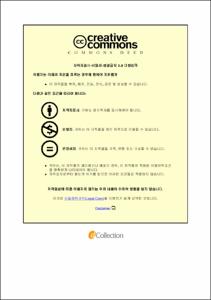발달장애 형제자매가 있는 비장애 형제자매의 가족에 대한 태도
- Abstract
- A concrete plan is to provide support for adult development-impaired families and their adult non-disabled siblings by analyzing their attitudes to future adult development-impaired families and their families greatly contributing and affecting them in the context of social change. In this study, Q methodologies were applied to understand subjective family perception patterns of non-disabled siblings, and to examine the characteristics and differences of each type.
The Q-population to examine the attitudes of non-disabled brothers and sisters to their families was composed of interviews with six adults aged 18 and older with brothers and sisters with developmental disabilities and consideration of prior documents. After arbitrarily selecting a statement that researchers thought would express their attitudes toward family members, the researchers adjusted their opinions and selected 40 Q samples. Forty non-disabled brothers and sisters, including those interviewed, were selected as P samples, and the Q classification was carried out on a scale of nine points composed of +4 in terms of subjective consent to each a question. After that, we used the QUANL pc program to analyze the attitudes of non-disabled brothers and sisters towards their families in four categories. The characteristics of the types identified in this study are as follows.
Type I thinks that it's the concept of "the most fortunate people who make me feel at ease and have my happy times together." In addition, in an important choice, I gave priority to my family and expressed a strong connection with my happiness and gave positive feedback to my family. However, non-disabled siblings think that they should not have negative emotions and sometimes control negative emotions themselves. Therefore, it is necessary to take into consideration the idea of allowing the Type 1 to prepare for independence and individualization as an adult, based on the current love for family.
Type II is a reassuring person who believes in his family and believes he has an organic relationship with himself. But they were focused on their own personal lives, which focused on their goals and important choices, and where families thought that they were the center of life, not the center of life. Therefore, type 2 is not required to be sacrificed to an individual, and it is necessary to provide a support plan that enables all family members to mutually support their families so that they can achieve their own goals.
Type III "Family is the person I have to protect and I feel responsible and can become an obstacle." Also, I don't feel Jewish and I don't make myself comfortable, and I think it's a hard and burdensome existence. To develop and strengthen a program capable of enhancing the level of family cohesion and improving the degree of relationship satisfaction through this type of program, which experiences a burden on a vague future while family ties are not good.
Type IV refers to the people I have to protect my family as Type III, and the sense of responsibility was leading. However, I think my family is always happy and helpful, considering my family's top priority in life. This type of family-backed model will be able to better cope with it through social support as well as family support. Therefore, various methods are needed to reduce stress on future care through social support programs and various activities with self-help groups in environments similar to themselves.
This study provides support for adult non-disabled brothers and sisters and explains their attitudes to their families. Support for adult non-disabled brothers and sisters is next to the state protection of important disabled children.
- Issued Date
- 2019
- Awarded Date
- 2019. 8
- Type
- Dissertation
- Publisher
- 부경대학교
- Affiliation
- 부경대학교 교육대학원
- Department
- 교육대학원 평생교육·인적자원개발전공
- Advisor
- 강승희
- Table Of Contents
- Ⅰ.서론 1
1. 연구의 필요성 및 목적 1
2. 연구문제 5
3. 용어의 정의 5
가. 비장애 형제자매 5
나. 발달장애인 5
다. 발달 장애인 가족 6
4. 연구의 제한점 6
Ⅱ. 이론적 배경 7
1. 발달 장애인 가족 7
가. 성인 발달 장애인 가족에 대한 이해 7
나. 발달장애인 가족 연구 현황 9
2. 비장애 형제자매 14
가. 성인 비장애 형제자매에 대한 이해 14
나. 성인 비장애 형제자매 연구 현황 19
3. 가족에 대한 태도 22
가. 태도의 개념 23
나. 태도의 형성 23
다. 태도의 특징 25
Ⅲ. 연구방법 27
1. 연구대상 27
2. Q표본 구성 28
3. Q표본 분류(Q-sorting) 31
4. 자료분석 32
Ⅳ. 연구결과 33
1. Q유형의 형성 33
2. 각 유형별 특성 분석 35
가. 제 1유형 : 융합가치 추구형 36
나. 제 2유형 : 독립가치 추구형 41
다. 제 3유형 : 의무적 책임감형 45
라. 제 4유형 : 우호적 책임감형 49
마. 공통적 의견 53
Ⅴ. 논의 및 결론 54
1. 논의 54
2. 결론 및 제언 60
참고문헌 62
부록 75
- Degree
- Master
- Appears in Collections:
- 교육대학원 > 평생교육인적자원개발전공
- Files in This Item:
-
-
Download
 발달장애 형제자매가 있는 비장애 형제자매의 가족에 대한 태도.pdf
기타 데이터 / 730.97 kB / Adobe PDF
발달장애 형제자매가 있는 비장애 형제자매의 가족에 대한 태도.pdf
기타 데이터 / 730.97 kB / Adobe PDF
-
Items in Repository are protected by copyright, with all rights reserved, unless otherwise indicated.